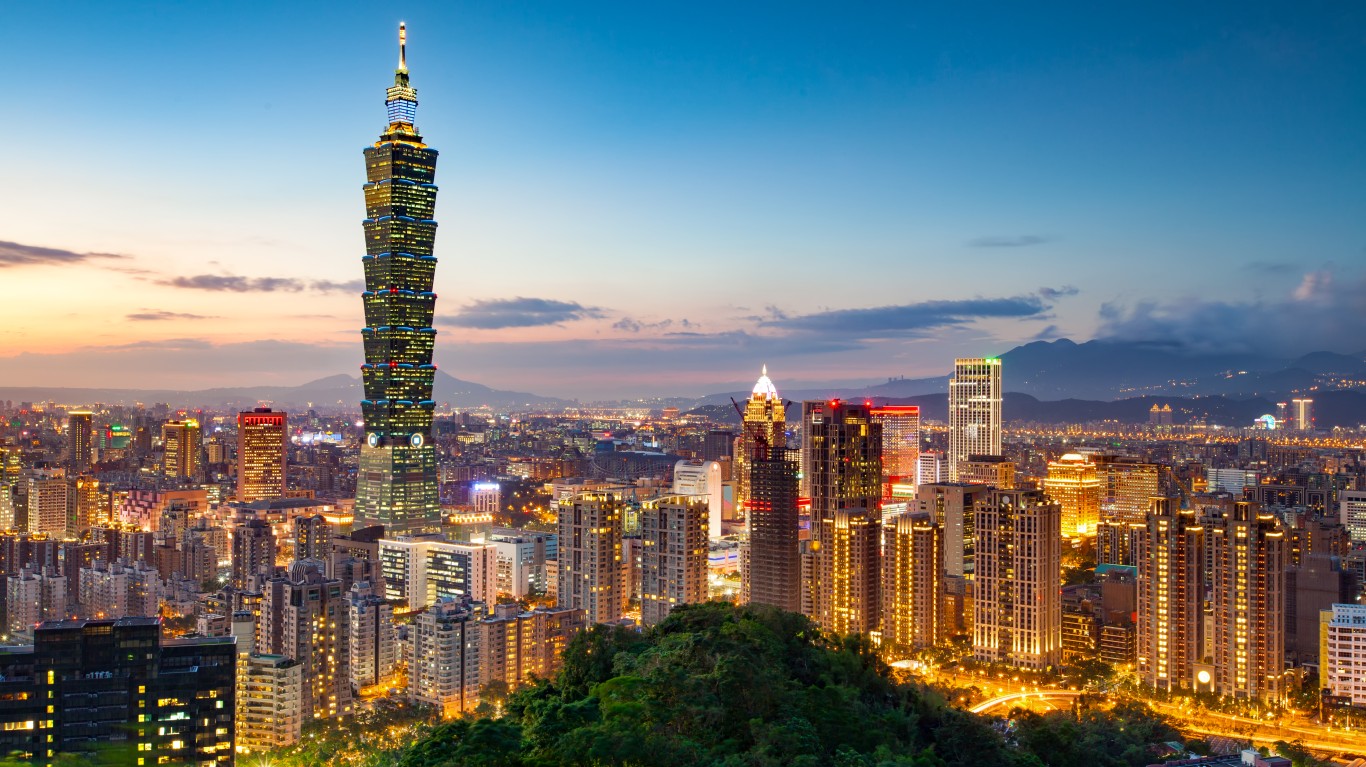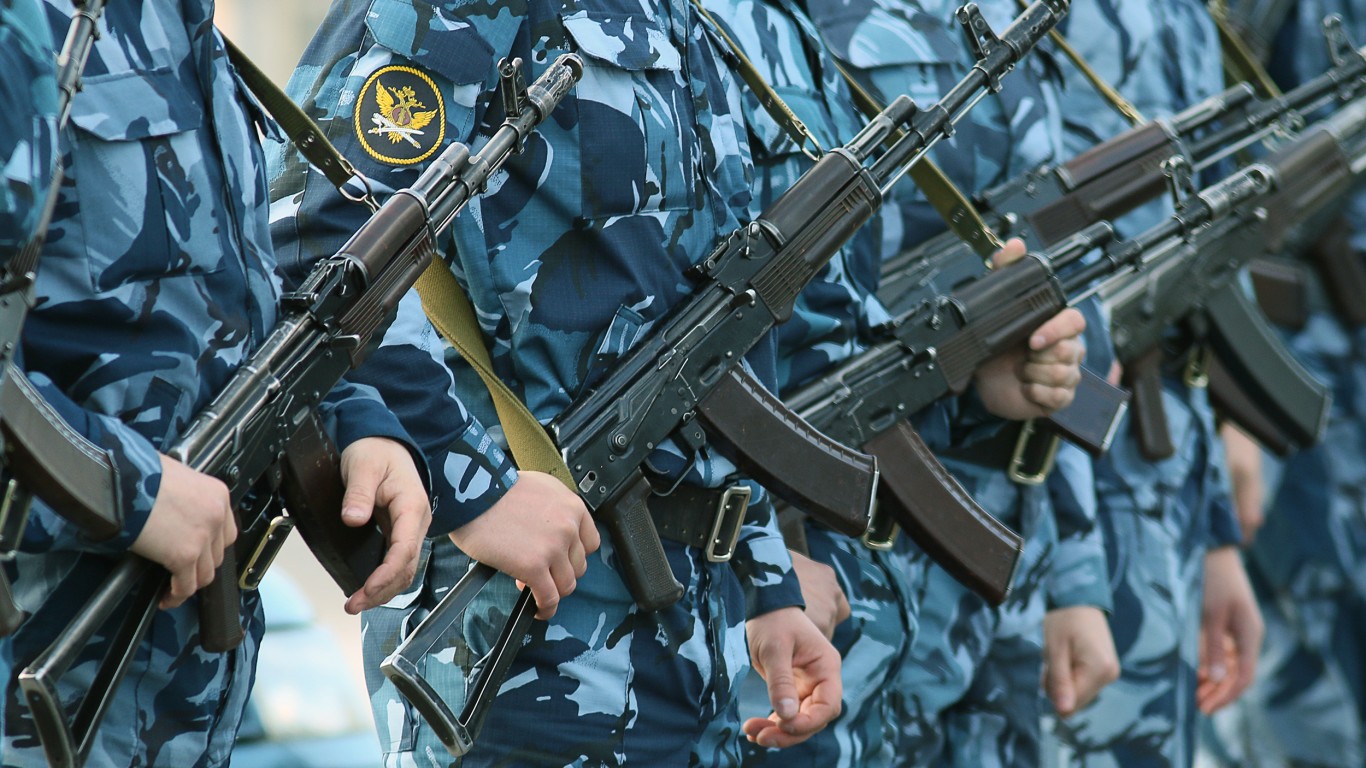
The Republic of China (Taiwan) is a de facto independent nation in diplomatic limbo. Very few of the world’s nations recognize Taiwan as a country and that small number diminishes further every year. The People’s Republic of China is clear in its policy that Taiwan is a part of China and is undergoing a large military build-up to make that perception a reality. Taiwan’s continued existence as a sovereign state is in serious jeopardy.
Taiwan has no realistic hope of reaching military parity with China but technology may help even the odds. Swarms of cost-effective drones could overwhelm air defenses and inflict massive damage to invading forces. In June 2024, the United States agreed to potentially sell Taiwan 1000 drones to bolster its defenses. This article will examine the deals and the strategy behind creating “a drone hellscape” to defend against Chinese aggression.
Why This Matters

Drone swarms represent a paradigm shift in modern warfare. They are far cheaper to build and operate than conventional weapon systems. They are also less dependent on resources and raw materials meaning that second and third-rate powers can still operate them. Taiwan’s military is modern and well-equipped but much smaller than China’s. Avoiding war should be the first priority and thousands of drones could be a useful tool in realizing that aim. However, some major risks have to be considered.
The Deals

The two major sales agreed upon in June 2024 are the latest chapters in a long history of arms sales between the United States and Taiwan. The first is a $60 million deal to purchase Switchblade 300 Loitering Munitions Systems. The Switchblade is a tiny (4-5 lbs depending on payload) kamikaze drone made by AeroVironment that can be used against personnel or armor. Its diminutive size means its operational range and endurance are limited. However, Kinmen is just six miles from mainland China so well within the operational range of the Switchblade.
The second deal is for the larger Altius 600 (Agile Launched Integrated Unmanned System) made by Anduril. The Altius is a much larger (c. 26 lbs) weapons system with an operational range of 270 miles so it could cover the entire Taiwan Strait. One of the system’s main strengths is its versatility: it can be launched from the air, land, or sea fitted with various warheads, and can operate autonomously for up to four hours.
Swarm Tactics In The Taiwan Strait

There are numerous ways the drones could be used in an invasion scenario. As previously mentioned, Kinmen is an island group still in Taiwanese hands that’s just over six miles from mainland China. To the north of Taiwan lies the thinly-populated Matsu Islands. Penghu is another island cluster off the west coast of Taiwan. Drones could form part of a forward defense strategy to delay a Chinese invasion of Taiwan. Swarms of drones could tie down China’s air defenses and inflict losses on warships and troop transports long before they reach Taiwan.
Alternatively, they could be held back in reserve. If Taiwan mined the strait and barricaded its shallow coastal waters, drones could be used against the ships sent to clear the obstacles. Finally, they could be thrown at the first waves of land crafts and troops attempting to crave out a beachhead on the few suitable landing sites. The People’s Liberation Army (PLA) lacks operational experience and a well-timed drone swarm could help turn the tide of an attack.
Perhaps the most important use of a large drone fleet would be not using it. Huge numbers of kamikaze drones capable of downing far more expensive capital ships like the Fujian may just be enough to deter Beijing.
Countermeasures

Unfortunately for Taiwan, kamikaze drones aren’t quite the bargain superweapon they may appear to be as they have some key vulnerabilities. The first is they are dependent on communication systems staying operational. China could eliminate or jam Taiwan’s communications and render its drones useless. Drones cannot kill autonomously, at least not under current policy, so a human-controlled system is vulnerable to cyber-attacks.
A 2011 incident between Iran and the United States clearly demonstrates the vulnerability of drones to electronic attacks. An Iranian cyber warfare unit successfully commandeered an American RQ-170 drone and forced it to land on Iranian soil. That captured device kickstarted Iran’s production of cheap kamikaze drones. Taiwan could see its drones misdirected or turned against them in a cyber attack.
In April 2024, China announced it was restructuring its Strategic Support Service into three co-equal branches. One of these is the Cyberspace Force which will handle cyber attack and defense. So China will be more prepared for dealing with a drone swarm than other nations. Indeed, American Major General John Morrison warned that the US is falling behind its adversaries in electronic warfare.
Conclusion

If the proposed deal goes through, Taiwan could add an extra layer of defense without great cost. Swarms of kamikaze drones are a daunting prospect, especially for an inexperienced military contemplating an amphibious invasion of a natural fortress. However, drones have vulnerabilities that China could exploit. Taiwan’s continued existence will rely on clever diplomacy, credible deterrence, and if all else fails, a multi-layered defense which drones can be a useful part of.
It’s Your Money, Your Future—Own It (sponsor)
Retirement can be daunting, but it doesn’t need to be.
Imagine having an expert in your corner to help you with your financial goals. Someone to help you determine if you’re ahead, behind, or right on track. With SmartAsset, that’s not just a dream—it’s reality. This free tool connects you with pre-screened financial advisors who work in your best interests. It’s quick, it’s easy, so take the leap today and start planning smarter!
Don’t waste another minute; get started right here and help your retirement dreams become a retirement reality.
Thank you for reading! Have some feedback for us?
Contact the 24/7 Wall St. editorial team.




